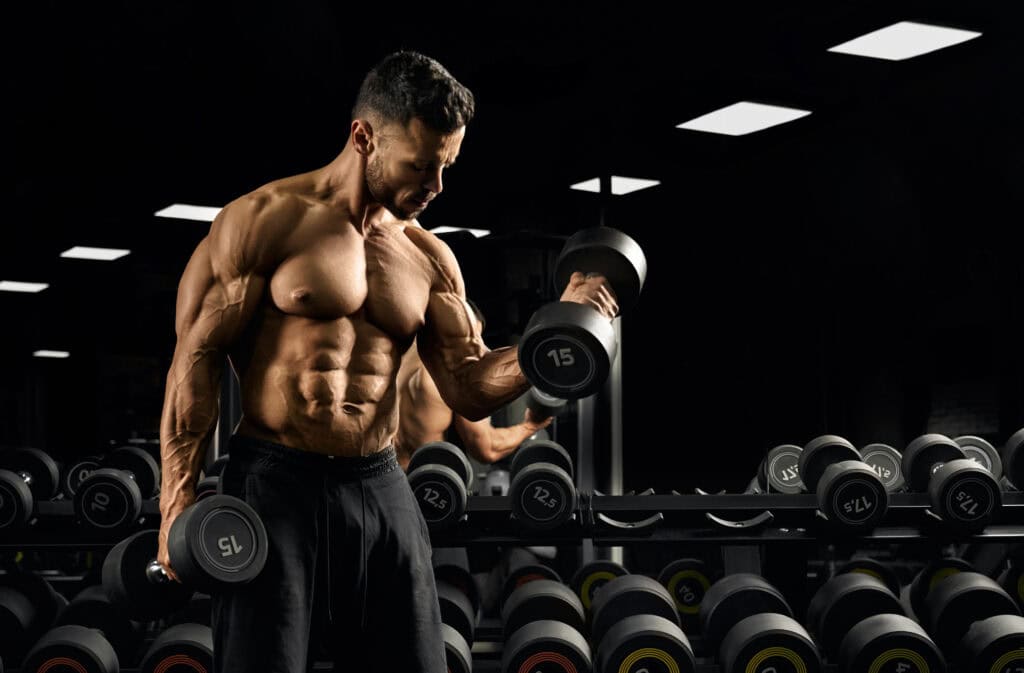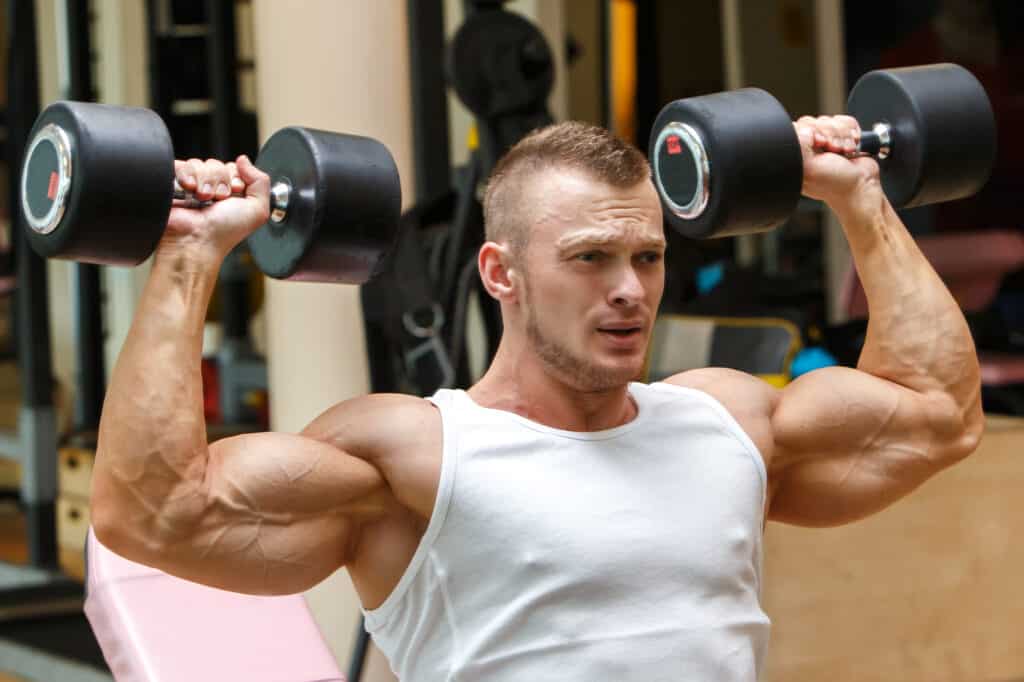Strength training can be both efficient and effective, even if you only have about 35-minutes to spare. Research shows that with the right strategy, you can still target all major muscle groups, boost strength, and even improve muscle mass. Whether you’re training at the gym or at home, choosing the right exercises, equipment, and intensity will make all the difference.
In this post, we’ll break down the best 35-minute, full-body, strength training workout, compare dumbbells, barbells, and machines, and explore whether compound movements are your best bet for maximizing time.
The Importance of Full-Body Workouts in Limited Time
A full-body workout is an excellent way to maximize efficiency when you’re short on time. Studies have shown that full-body routines promote muscular hypertrophy and strength gains just as effectively as split routines, especially when performed with compound exercises that target multiple muscle groups at once (Schoenfeld, 2010). By working all your major muscles in a single session, you also increase calorie expenditure and improve functional fitness.
Compound Movements: The Key to Efficiency
If you’re looking for the best bang for your buck in terms of time and energy, compound movements are the clear winner. These exercises engage multiple muscle groups at once, enabling you to hit all the major muscles of your body without having to perform a large number of individual exercises. Movements like squats, deadlifts, and overhead presses not only build strength but also improve coordination, balance, and overall functional fitness.
Research indicates that compound exercises result in greater muscle activation and metabolic response compared to isolation exercises (Paoli, 2015). For example, squats and deadlifts target not only your legs but also your core and back, providing a total-body stimulus. This makes them ideal for short, intense workouts where every minute counts.
Key Compound Movements for a 35-Minute Workout:
- Squat or Deadlift
- Bench Press or Push-Up
- Pull-Up or Bent-Over Row
- Overhead Press or Dumbbell Press
- Plank or Hanging Leg Raise

Dumbbells, Barbells, or Machines?
The debate between dumbbells, barbells, and machines often comes down to personal preference and workout goals. Let’s break down the pros and cons of each:
Dumbbells
Dumbbells offer flexibility, allowing for a wide range of motion and unilateral training (training one side of the body at a time). This is important for correcting muscle imbalances. In a short workout, dumbbells can be highly effective because they allow for a quicker transition between exercises, perfect for keeping the intensity up.
- Research Insight: Studies suggest that dumbbells activate stabilizer muscles to a greater degree than machines or barbells due to the need for balance (Spennewyn, 2008). This increases the overall workload, which is beneficial for strength gains.
Barbells
Barbells allow for lifting heavier weights, making them ideal for building maximum strength. They are also highly efficient for exercises like deadlifts and squats, as you can load the barbell with significant weight. However, transitioning between exercises with barbells may take more time compared to dumbbells.
- Research Insight: A study comparing free weights (including barbells) with machines found that free weights led to greater increases in strength and balance (Schwanbeck, 2009).
Machines
While machines offer ease of use and safety, especially for beginners, they may limit the range of motion and do not activate stabilizing muscles to the same extent as free weights. That said, machines can still be a time-saver in the gym since they allow for quick setup and minimal adjustment between exercises.
- Research Insight: Machines are beneficial for isolating muscle groups and ensuring proper form, but they generally lead to less muscle activation than free weights (Spennewyn, 2008).
Conclusion: If you have access to both barbells and dumbbells, alternating between them could give you the best of both worlds. However, if time is of the essence, dumbbells may offer more efficiency with their quicker transition times. Machines are useful for beginners or for those who want a safer workout but won’t provide the same muscle activation as free weights.
The Ideal 35-Minute Full-Body Workout
With just 35 minutes, focus on performing compound movements that target all major muscle groups. Here’s a suggested full-body workout using dumbbells, though barbells or machines can be substituted:
Warm-up (5 minutes)
- Jumping jacks, high knees, or a light jog
- Dynamic stretches: Arm circles, hip openers, and lunges with a twist
Workout (30 minutes, 3-4 sets per exercise)
- Goblet Squat (Dumbbell): 8-10 reps
- Targets: Quads, glutes, core
- Dumbbell Bench Press: 8-10 reps
- Targets: Chest, triceps, shoulders
- Dumbbell Row (Single-arm): 8-10 reps each arm
- Targets: Back, biceps, core
- Overhead Dumbbell Press: 8-10 reps
- Targets: Shoulders, triceps, core
- Romanian Deadlift (Dumbbells): 8-10 reps
- Targets: Hamstrings, glutes, lower back
- Plank (Bodyweight): Hold for 30-45 seconds
- Targets: Core, shoulders
Cool-down (5 minutes)
- Stretch all major muscle groups, focusing on deep, static stretches.
Intensity: The Key to Maximizing Time
Since time is limited, the intensity of your workout is crucial. Keep rest periods between sets to a minimum (30-60 seconds). This helps maintain a high heart rate, which not only improves cardiovascular fitness but also increases calorie burn. Using a higher intensity has been shown to trigger greater increases in strength and hypertrophy, even in shorter workouts (Schoenfeld, 2016).
Another method to increase intensity is by employing supersets, where you perform two exercises back-to-back with no rest in between. For example, pair a squat with an overhead press, or follow up bench presses with rows.
Conclusion: Compound Movements and Free Weights for Maximum Efficiency
For a 35-minute workout, compound movements using dumbbells or barbells are the most efficient and effective choice. They allow you to hit all major muscle groups in a short period while maximizing muscle activation and calorie burn. Dumbbells, in particular, offer the flexibility and unilateral training needed for a well-rounded workout, while barbells can help you lift heavier for more strength gains. Machines are useful but generally offer less muscle activation compared to free weights.
By maintaining high intensity and focusing on efficient exercises, you can achieve significant strength and fitness gains, even when time is limited. This makes it possible to sustain a balanced, effective, full-body workout routine, whether you’re at the gym or working out from home.
Stay Strong Together
If you’re serious about building muscle and reaching your fitness goals, the Jefit app is the perfect tool to help get you there. With over 20 million downloads and more than 12 million bodybuilders and gym-goers using the app to track their workouts, Jefit is the ultimate strength training companion. Rated as the 2023 Best App and featured by top publications like Men’s Health, PC Magazine, and USA TODAY. Jefit boasts 42,000+ five-star ratings for its user-friendly design and comprehensive features. Whether you’re focused on protein intake, building strength, or tracking your progress, Jefit has everything you need to succeed. Download Jefit today and join millions of fitness enthusiasts transforming their bodies!
- The New Rules of Strength Training in 2026 - December 24, 2025
- Fibermaxxing: Viral Nutrition Trend You Should Know - December 17, 2025
- Hybrid Metabolic Strength Training for Faster Results - December 10, 2025
